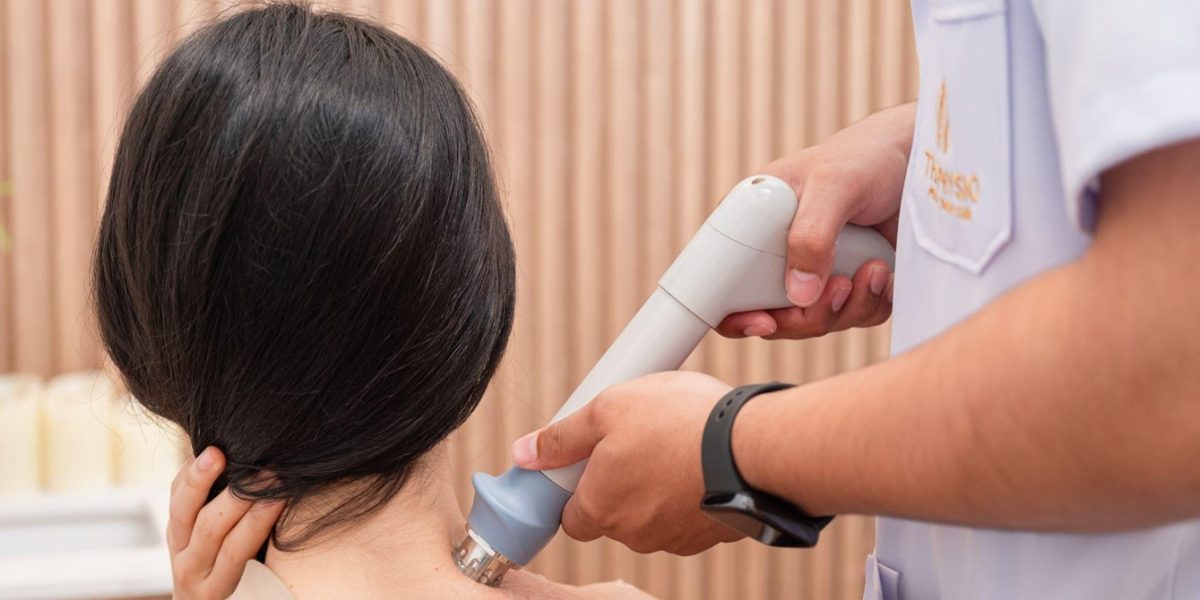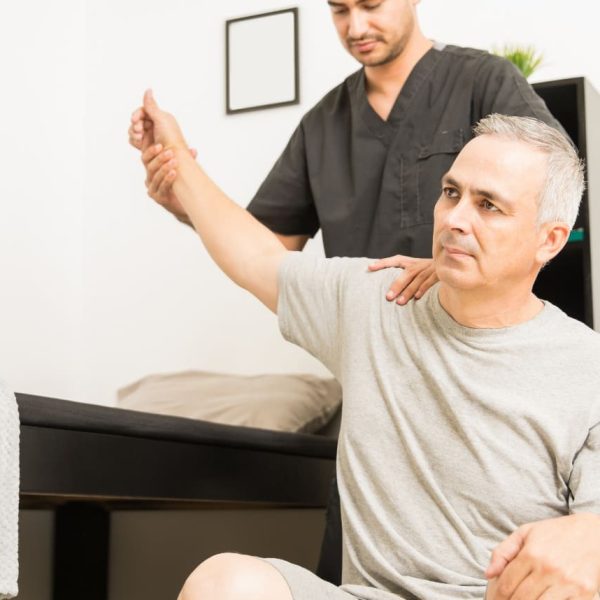Introduction
Shoulder pain is a common condition that affects people of all ages and can impact daily activities such as sports, personal hygiene and dressing. It often arises from excessive movement of the shoulder joint and patients may experience pain in the shoulder that radiates down the arm. Some individuals may have occasional pain, while others may experience chronic pain that feels constant.

Symptoms
- Aching or sharp pain around the shoulder
- Numbness or weakness
- Stiff shoulder, making it difficult to move
- Abnormal shape of the shoulder, unable to lift or move the arm normally
Causes
Shoulder pain can result from various causes, including:
- Inflammation or tearing of the rotator cuff tendons: Chronic inflammation or tearing can cause pain and reduce shoulder mobility.
- Shoulder impingement syndrome: Occurs when the rotator cuff tendons are compressed, leading to pain in the front and side of the shoulder that may radiate down the upper arm.
- Frozen shoulder (adhesive capsulitis): This condition results from chronic inflammation of the shoulder capsule, leading to limited movement such as the inability to raise the arm.
- Biceps tendonitis: Pain is felt at the front of the shoulder, often occurring alongside rotator cuff tendonitis.
- Shoulder degeneration: Patients may experience pain during shoulder movement and may have pain even at rest, often resulting from injury or rheumatoid arthritis.
Physical Therapy Treatments
1. Heat and Cold Therapy:
Helps relax tense muscles and improve flexibility.
2. Transcutaneous Electrical Nerve Stimulation (TENS):
Reduces pain and stimulates blood circulation.
3. Ultrasound Therapy (US):
Enhances blood flow and aids tissue repair.
4. Peripheral Magnetic Stimulation (PMS):
Reduces pain, relaxes muscles, and increases strength.
5. Shockwave Therapy (SWT):
Stimulates tissue repair and inhibits inflammation.
6. High Power Laser Therapy (HPLT):
Improves blood circulation and alleviates pain.
7. Stretching and Exercise:
Reduces tension and strengthens muscles.
8. Manual Technique:
Relieves muscle tension and alleviates pain.
9. Joint Mobilization:
Increases the range of motion of the joint and reduces tissue tension around the joint.
Frequently Asked Questions
1. Can frozen shoulders heal on its own?
It can heal on its own but recovery can take a long time. The recovery process involves three phases: inflammation, stiffness and recovery, which can take approximately 2-3 years. Physical therapy can help reduce pain and inflammation, as well as increase the range of motion, speeding up recovery.
2. How can shoulder pain be prevented?
- Reduce heavy use of the shoulder joint such as lifting heavy objects or overexerting during activities.
- Avoid activities that require prolonged heavy use of the shoulder joint

